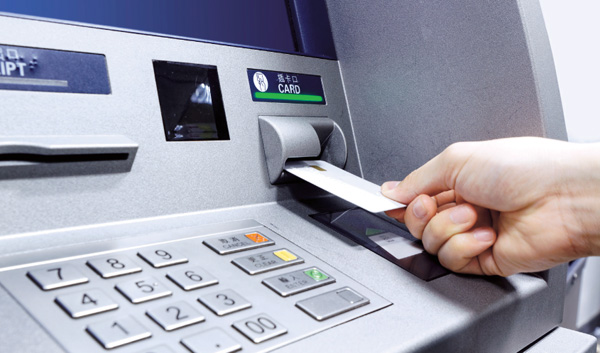The survey results make vivid exactly how fast branches are becoming obsolete. Three in 10 Americans have not visited a bank or credit union branch in the past six months, according to a survey conducted for Bankrate.com.
And there are not significant generational differences, said Greg McBride, Bankrate's chief financial analyst.
"Among those under age 30, 42% have been to a branch within the last 30 days compared to 52% of those over age 50," he said.
Recommended For You
A zinger is that among retirees, one in five has not visited a branch in over a year, per Bankrate.
McBride predicted that within five years, the number of us who haven't been inside a branch in the past six months will top 50%.
Anthony Browne, chief executive of the British Bankers' Association, wrote about the topic in the London Telegraph newspaper last month.
"I realize this is a strange confession from the head of the British Bankers' Association, but I haven't visited my branch since last year – and I'm not alone."
Right now, there is a big rethink happening on the future viability of branches," he wrote.
Jim Marous, a financial services marketing expert with New Control in Cleveland, said, "I called seven of the top 10 banks. Every one said if they had the choice they would close 80% more branches than they would open. There are at least 10,000 branches out there that should be closed."
And yet, added Marous, old habits die hard with many bankers – especially in community banks and credit unions – clinging to their branches.
"The customer base is moving much faster into digital money than the bankers are," he said.
"The future of branches looks every bit as bright as the future of video stores looked a few years ago," said Don Peppers, a best-selling author and a customer service guru.
Is the branch going extinct? Nobody believes that, but increasing numbers of experts – who point to the death of video stores, bookstores, record shops and, lately, big box appliance stores as harbingers of what is coming to banking – believe that in the very near future there will be many fewer branches, they will be much smaller, and they will be designed to deliver consultative services (financial planning, complex loan origination) rather than old-fashioned transactions (deposits, cash out, simple credit card account openings).
Branch defenders argue that financial relationships are special and, therefore, branches will long endure.
Others scoff at that notion.
"I'm tired of hearing, 'Banking is different,'" Marous said.
Marous pointed out that although bankers may like branches, there is not much evidence that consumers do.
"In most you could shoot off a cannon and you wouldn't hurt anybody. That's how empty they are," he said.
Some point out that the flight from branches started years ago. "It began with the ATM," said Peppers, observing that when ATMs became commonplace in the 1970s, many consumers realized they could do most of their banking without entering a branch and they liked it. They also like online banking, a lot, because home banking often delivers on the promise the name suggests: From home, a consumer can do most of what he/she formerly did in a branch.
Smartphones, which in effect put a bank branch in every hand, have accelerated the flight from branches by making banking something that anyone can do anywhere, 24/7.
"It's about the digitization of money," Peppers elaborated. That's the intellectual view that, as money morphs from analog (paper) into digital (bits and bytes), the role of the analog, physical world of money – exemplified by branches – diminishes. Consumers are at a point, with mobile remote deposit capture and direct deposit along with debit cards, that they never need to set foot in a branch make deposits or withdrawals.
Kirk Ward, a 72-year-old retired loan examiner in Marco Island, Fla., offered a simpler explanation why he never goes to the $1.3 billion Norcross, Ga.-based Associated Credit Union where he and his wife are members.
"It's about convenience. That is why branches are closing," he said.
Then there are the economic benefits to financial institutions in embracing digitalization.
Stephen Ellis, director of the financial services team at Morningstar, reported the savings are huge. According to him, it's 95% cheaper to process a deposit via mobile remote deposit capture than at a teller window, He also claimed it's 65% less expensive to process a mobile or online payment than one made via check.
Operating branches simply is very expensive. The digital DIY channel delivers efficiencies, and for many consumers, their preference for DIY appears to be on the rise.
In the United Kingdom, where cellphones took hold even faster than in the U.S., HSBC, Barclays and Royal Bank of Scotland have all warned their customers that significant branch closures are on the horizon.
"Bankers don't want to believe it but most people do not want to go into a branch. They want to do this remotely," said branding expert Tom Dougherty, CEO of Stealing Share in Greensboro, N.C. "Bankers believe in branches because they are stuck in an old model."
"The writing is on the wall for branches," he said. "Even if some still don't see it."
© 2025 ALM Global, LLC, All Rights Reserved. Request academic re-use from www.copyright.com. All other uses, submit a request to [email protected]. For more information visit Asset & Logo Licensing.







